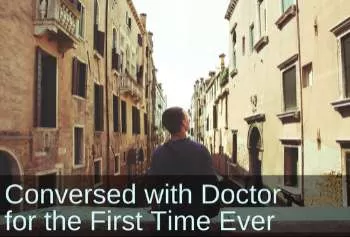Primitive Reflex Integration Case Studies
Young Man with Down Syndrome and Autism Has New Abilities after 6 Weeks of Rhythmic Movements.
Rhythmic movements make a huge difference!
Neurdevelopmental movements from the Brain and Sensory Foundations First Level course help this 20-year-old man with Down Syndrome and autism converse with his doctor for the first time; allowing for more accurate medical assessment and improved care.
Submitted by Sharon Branand, PTA

| Before | After |
|---|---|
| Had never spoken to his doctor before | At his most recent appointment, spoke to his doctor for the first time; doctor has decreased meds |
A 20-year-old man has been doing rhythmic movements [from the Brain and Sensory Foundations course] for six weeks. He has Down Syndrome and Autism.
"He just went to a follow up with one of his doctors and for the first time ever he conversed with his doctor and answered questions! The doctor noted that he was at a very different place this visit and decreased his meds."
Mom explained what they were doing. She has several more examples of his new ability to be flexible and less bothered by stimuli. Amazing!!”
[Edited for length and clarity; emphasis added]
*Disclaimer: The activities in the Brain and Sensory Foundations curriculum make use of the natural processes of neuroplasticity and development that are innately wired in the design of human beings to promote maturity and function. These activities appear to calm, organize, and mature the neuro-sensory-motor systems just as we see in the healthy development of human infants. Individual results may vary, and we do not claim to offer a diagnosis or cure for any specific condition or disorder. The Brain and Sensory Foundations activities appear to improve overall functioning resulting in measurable improvements for a range of conditions as demonstrated in over 1800 case studies from participants.

